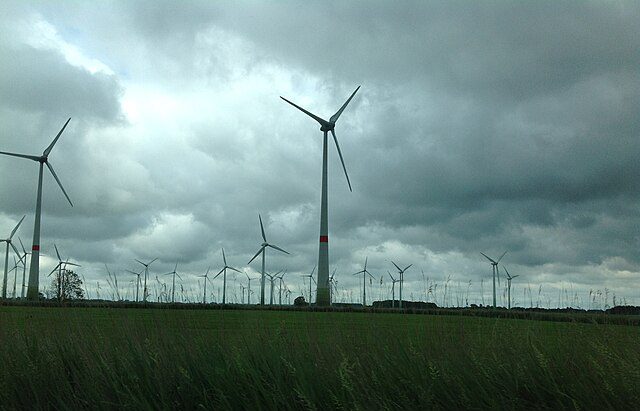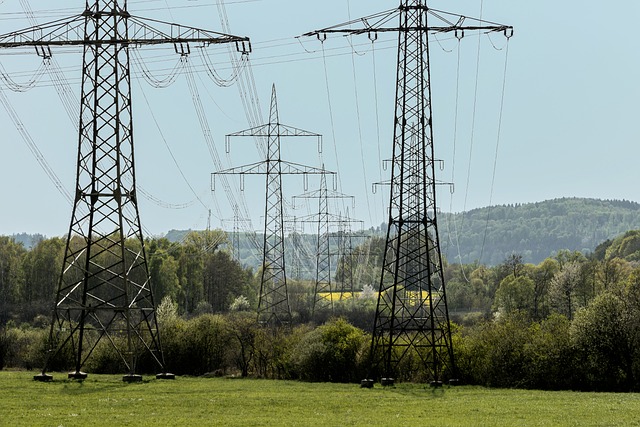By Jo Nova
People forget that while electricity flows down those long interconnectors, sometimes high prices flow back the other way.
The Dunkelflute (wind drought) and a cold weather spell means electricity is at nosebleed prices. In southern Norway usually people pay €0.18 per KWh but the electricity price rose to over €1.12 per kilowatt hour for the highest cost hour last week. In southern Sweden the electricity used for a 10 minute shower cost €2.65 compared to €0.01 in central Sweden.
Montel Analytics forecast German wind output to drop to 2.8 gigawatts, compared to a normal capacity of 19 gigawatts at this time of year. The shift in weather has forced Germany to burn more fossil fuels, fire up coal power stations, and import energy from France…
In Germany consumer prices hit €936 per megawatt hour at one point last week because wind energy had failed. This was the highest level in 18 years. Things were so bad, companies stopped production in Germany.
Due to record-high electricity prices in Germany, several companies, including some that have been in operation for over a century, have been forced to halt production. Currently, electricity prices have reached €936 per megawatt-hour, Azernews reports.
The Saxon Feralpi electric steelmaking plant in Riesa has completely ceased operations. Company executives, in a statement to Bild newspaper, expressed that the situation is dire and stressed the urgent need for power plants that can start operating in the near future to mitigate the crisis.
The steep rise in electricity prices is also expected to affect individual consumers, including one million families. The supplier company Tibber has warned of price hikes of up to 400% in a statement on social media platform X.
“It’s an absolutely sh*t situation,” said Norway’s energy minister
Norway is swimming in hydropower but still gets 10% of their electricity from wind power on the continent. Both ruling parties in Norway are promising to cut the interconnector deal with Denmark and the continent.
Norway aims to cut energy links with Europe due to soaring prices
“It’s an absolutely sh*t situation,” said Norway’s energy minister Terje Aasland cited by FT, reacting to electricity prices in the country that are six times that of the EU average these days.
The two ruling parties in Norway are pledging to campaign to cut the two power interconnectors that link the country with Denmark, when they come up for renewal in 2026, reports the FT. The smaller coalition party, the Center Party is eyeing revisiting similar energy links with the UK and Europe.
With current high Norwegian prices, critics argue Norway should only send electricity from its abundant hydropower abroad after it has ensured low prices at home, as was the case for decades previously.
The Swedish Minister is blaming the Germans for closing their nuclear plants
Swedish minister open to new measures to tackle energy crisis, blames German nuclear phase-out
Euractive Dec 13th, 2024
… Swedish Prime Minister Ulf Kristersson (Moderates, EPP) angered the opposition with his words: “There will be hard times ahead”. “I realise that nobody is happy when I say that ‘if we hadn’t shut down half of nuclear power, we wouldn’t have these problems’. But it’s true and it needs to be said.”, Kristersson said, referring to the previous Social Democrat-Greens coalition closing several nuclear reactors between 2019 and 2020 as part of a policy shift towards greater reliance on renewable energy sources.
Sweden’s Energy Minister Ebba Busch went further and blamed the Germans too (to be fair, both Sweden and German closed nuclear power plants in 2019, but Germany closed all their nuclear plants in April 2022).
“I’m furious with the Germans,” Busch told Swedish broadcaster SVT.
“They have made a decision for their country, which they have the right to make. But it has had very serious consequences,” she added.
When wind production in neighbouring Germany is low, Swedish electricity is exported to fill the gap, reducing the supply available to Swedish consumers and driving up prices.
Last year Sweden decided to build 10 new nuclear reactors. They still have three operating plants with six reactors.
At least one study calculated if Germany had just kept using nuclear power, it would have saved $600b and cut emissions by 73%. Those losses will only grow.
Photo: Mrb-Wind, lower Saxony, Germany.
Photo High voltage lines: Image by minka2507 from Pixabay

